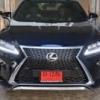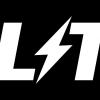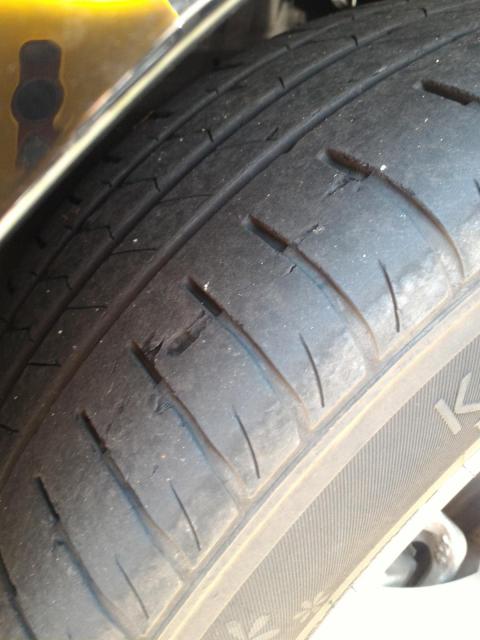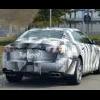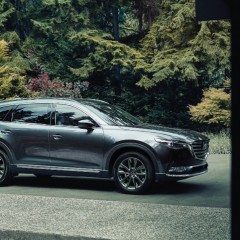Search the Community
Showing results for tags 'chip'.
-
https://news.microsoft.com/source/features/ai/microsofts-majorana-1-chip-carves-new-path-for-quantum-computing/ Microsoft today introduced Majorana 1, the world’s first quantum chip powered by a new Topological Core architecture that it expects will realize quantum computers capable of solving meaningful, industrial-scale problems in years, not decades. It leverages the world’s first topoconductor, a breakthrough type of material which can observe and control Majorana particles to produce more reliable and scalable qubits, which are the building blocks for quantum computers. In the same way that the invention of semiconductors made today’s smartphones, computers and electronics possible, topoconductors and the new type of chip they enable offer a path to developing quantum systems that can scale to a million qubits and are capable of tackling the most complex industrial and societal problems, Microsoft said. “We took a step back and said ‘OK, let’s invent the transistor for the quantum age. What properties does it need to have?’” said Chetan Nayak, Microsoft technical fellow. “And that’s really how we got here – it’s the particular combination, the quality and the important details in our new materials stack that have enabled a new kind of qubit and ultimately our entire architecture.” This new architecture used to develop the Majorana 1 processor offers a clear path to fit a million qubits on a single chip that can fit in the palm of one’s hand, Microsoft said. This is a needed threshold for quantum computers to deliver transformative, real-world solutions – such as breaking down microplastics into harmless byproducts or inventing self-healing materials for construction, manufacturing or healthcare. All the world’s current computers operating together can’t do what a one-million-qubit quantum computer will be able to do. “Whatever you’re doing in the quantum space needs to have a path to a million qubits. If it doesn’t, you’re going to hit a wall before you get to the scale at which you can solve the really important problems that motivate us,” Nayak said. “We have actually worked out a path to a million.” The topoconductor, or topological superconductor, is a special category of material that can create an entirely new state of matter – not a solid, liquid or gas but a topological state. This is harnessed to produce a more stable qubit that is fast, small and can be digitally controlled, without the tradeoffs required by current alternatives. A new paper published Wednesday in Nature outlines how Microsoft researchers were able to create the topological qubit’s exotic quantum properties and also accurately measure them, an essential step for practical computing. This breakthrough required developing an entirely new materials stack made of indium arsenide and aluminum, much of which Microsoft designed and fabricated atom by atom. The goal was to coax new quantum particles called Majoranas into existence and take advantage of their unique properties to reach the next horizon of quantum computing, Microsoft said. The world’s first Topological Core powering the Majorana 1 is reliable by design, incorporating error resistance at the hardware level making it more stable. Commercially important applications will also require trillions of operations on a million qubits, which would be prohibitive with current approaches that rely on fine-tuned analog control of each qubit. The Microsoft team’s new measurement approach enables qubits to be controlled digitally, redefining and vastly simplifying how quantum computing works. This progress validates Microsoft’s choice years ago to pursue a topological qubit design – a high risk, high reward scientific and engineering challenge that is now paying off. Today, the company has placed eight topological qubits on a chip designed to scale to one million. “From the start we wanted to make a quantum computer for commercial impact, not just thought leadership,” said Matthias Troyer, Microsoft technical fellow. “We knew we needed a new qubit. We knew we had to scale.” That approach led the Defense Advanced Research Projects Agency (DARPA), a federal agency that invests in breakthrough technologies that are important to national security, to include Microsoft in a rigorous program to evaluate whether innovative quantum computing technologies could build commercially relevant quantum systems faster than conventionally believed possible. Microsoft is now one of two companies to be invited to move to the final phase of DARPA’s Underexplored Systems for Utility-Scale Quantum Computing (US2QC) program – one of the programs that makes up DARPA’s larger Quantum Benchmarking Initiative – which aims to deliver the industry’s first utility-scale fault-tolerant quantum computer, or one whose computational value exceeds its costs. ‘It just gives you the answer’ In addition to making its own quantum hardware, Microsoft has partnered with Quantinuum and Atom Computing to reach scientific and engineering breakthroughs with today’s qubits, including the announcement last year of the industry’s first reliable quantum computer. These types of machines offer important opportunities to develop quantum skills, build hybrid applications and drive new discovery, particularly as AI is combined with new quantum systems that will be powered by larger numbers of reliable qubits. Today, Azure Quantum offers a suite of integrated solutions allowing customers to leverage these leading AI, high performance computing and quantum platforms in Azure to advance scientific discovery. But reaching the next horizon of quantum computing will require a quantum architecture that can provide a million qubits or more and reach trillions of fast and reliable operations. Today’s announcement puts that horizon within years, not decades, Microsoft said. Because they can use quantum mechanics to mathematically map how nature behaves with incredible precision – from chemical reactions to molecular interactions and enzyme energies – million-qubit machines should be able to solve certain types of problems in chemistry, materials science and other industries that are impossible for today’s classical computers to accurately calculate. For instance, they could help solve the difficult chemistry question of why materials suffer corrosion or cracks. This could lead to self-healing materials that repair cracks in bridges or airplane parts, shattered phone screens or scratched car doors. Because there are so many types of plastics, it isn’t currently possible to find a one-size-fits-all catalyst that can break them down – especially important for cleaning up microplastics or tackling carbon pollution. Quantum computing could calculate the properties of such catalysts to break down pollutants into valuable byproducts or develop non-toxic alternatives in the first place. Enzymes, a kind of biological catalyst, could be harnessed more effectively in healthcare and agriculture, thanks to accurate calculations about their behavior that only quantum computing can provide. This could lead to breakthroughs helping to eradicate global hunger: boosting soil fertility to increase yields or promoting sustainable growth of foods in harsh climates. Most of all, quantum computing could allow engineers, scientists, companies and others to simply design things right the first time – which would be transformative for everything from healthcare to product development. The power of quantum computing, combined with AI tools, would allow someone to describe what kind of new material or molecule they want to create in plain language and get an answer that works straightaway – no guesswork or years of trial and error. “Any company that makes anything could just design it perfectly the first time out. It would just give you the answer,” Troyer said. “The quantum computer teaches the AI the language of nature so the AI can just tell you the recipe for what you want to make.” Rethinking quantum computing at scale The quantum world operates according to the laws of quantum mechanics, which are not the same laws of physics that govern the world we see. The particles are called qubits, or quantum bits, analogous to the bits, or ones and zeros, that computers now use. Qubits are finicky and highly susceptible to perturbations and errors that come from their environment, which cause them to fall apart and information to be lost. Their state can also be affected by measurement – a problem because measuring is essential for computing. An inherent challenge is developing a qubit that can be measured and controlled, while offering protection from environmental noise that corrupts them. Qubits can be created in different ways, each with advantages and disadvantages. Nearly 20 years ago, Microsoft decided to pursue a unique approach: developing topological qubits, which it believed would offer more stable qubits requiring less error correction, thereby unlocking speed, size and controllability advantages. The approach posed a steep learning curve, requiring uncharted scientific and engineering breakthroughs, but also the most promising path to creating scalable and controllable qubits capable of doing commercially valuable work. The disadvantage is – or was – that until recently the exotic particles Microsoft sought to use, called Majoranas, had never been seen or made. They don’t exist in nature and can only be coaxed into existence with magnetic fields and superconductors. The difficulty of developing the right materials to create the exotic particles and their associated topological state of matter is why most quantum efforts have focused on other kinds of qubits. The Nature paper marks peer-reviewed confirmation that Microsoft has not only been able to create Majorana particles, which help protect quantum information from random disturbance, but can also reliably measure that information from them using microwaves. Majoranas hide quantum information, making it more robust, but also harder to measure. The Microsoft team’s new measurement approach is so precise it can detect the difference between one billion and one billion and one electrons in a superconducting wire – which tells the computer what state the qubit is in and forms the basis for quantum computation. The measurements can be turned on and off with voltage pulses, like flicking a light switch, rather than finetuning dials for each individual qubit. This simpler measurement approach that enables digital control simplifies the quantum computing process and the physical requirements to build a scalable machine. Microsoft’s topological qubit also has an advantage over other qubits because of its size. Even for something that tiny, there’s a “Goldilocks” zone, where a too-small qubit is hard to run control lines to, but a too-big qubit requires a huge machine, Troyer said. Adding the individualized control technology for those types of qubits would require building an impractical computer the size of an airplane hangar or football field. Majorana 1, Microsoft’s quantum chip that contains both qubits as well as surrounding control electronics, can be held in the palm of one’s hand and fits neatly into a quantum computer that can be easily deployed inside Azure datacenters. “It’s one thing to discover a new state of matter,” Nayak said. “It’s another to take advantage of it to rethink quantum computing at scale.” Designing quantum materials atom by atom Microsoft’s topological qubit architecture has aluminum nanowires joined together to form an H. Each H has four controllable Majoranas and makes one qubit. These Hs can be connected, too, and laid out across the chip like so many tiles. “It’s complex in that we had to show a new state of matter to get there, but after that, it’s fairly simple. It tiles out. You have this much simpler architecture that promises a much faster path to scale,” said Krysta Svore, Microsoft technical fellow. The quantum chip doesn’t work alone. It exists in an ecosystem with control logic, a dilution refrigerator that keeps qubits at temperatures much colder than outer space and a software stack that can integrate with AI and classical computers. All those pieces exist, built or modified entirely in-house, she said. To be clear, continuing to refine those processes and getting all the elements to work together at accelerated scale will require more years of engineering work. But many difficult scientific and engineering challenges have now been met, Microsoft said. Getting the materials stack right to produce a topological state of matter was one of the hardest parts, Svore added. Instead of silicon, Microsoft’s topoconductor is made of indium arsenide, a material currently used in such applications as infrared detectors and which has special properties. The semiconductor is married with superconductivity, thanks to extreme cold, to make a hybrid. “We are literally spraying atom by atom. Those materials have to line up perfectly. If there are too many defects in the material stack, it just kills your qubit,” Svore said. “Ironically, it’s also why we need a quantum computer – because understanding these materials is incredibly hard. With a scaled quantum computer, we will be able to predict materials with even better properties for building the next generation of quantum computers beyond scale,” she said.
- 17 replies
-
- 2
-

-
- majorana 1
- microsoft
-
(and 7 more)
Tagged with:
-
Hi all, anyone else experiencing carpark that accept the traditional cashcard with chip only? Due to my old cashcard expired after 7 years, I am using flashpay netts in my IU now. Not facing any issue with all erp and every carpark till Cathay Cineplex. When exiting the carpark, the system only can take cashcard with chip. Anyone experienced any other carpark as well?
-
Dear all, Just would like to find out what are the CPU brands that you guys are using. Eg. If you have 1 PC using AMD and 1 notebook using Intel, you select "Desktop - AMD" & "Notebook - Intel". And so on. Intel? OR AMD? Multiple choice is allowed.
-
As per topic, any idea where to buy it? I've gone to a few petrol stations around my area and they're no longer selling it. Or is it no longer for sale? My IU can only read chip ones.
-
Hi, has anyone used this before? Any reviews? Does these chips actually increase the hp and torque?
- 451 replies
-
- 2
-

-
- performance
- tuning
-
(and 2 more)
Tagged with:
-
https://asia.nikkei.com/Business/Tech/Semiconductors/Made-in-China-chip-drive-falls-far-short-of-70-self-sufficiency?utm_campaign=GL_indo_pacific&utm_medium=email&utm_source=NA_newsletter&utm_content=article_link&del_type=11&pub_date=20211013060000&seq_num=12&si=44594 'Made in China' chip drive falls far short of 70% self-sufficiency 16% produced domestically as equipment delays hamper push toward 2025 target SiEn Integrated Circuits has thrown itself into China's campaign to attain semiconductor self-sufficiency. (Photo by Shunsuke Tabeta) SHUNSUKE TABETA, Nikkei staff writerOctober 13, 2021 05:00 JST BEIJING -- The Chinese government's goal of meeting 70% of its semiconductor needs through domestic supply remains a long way off, private-sector research shows, with an estimated self-sufficiency rate of 16% last year despite an all-out government push to boost production. In an event in Beijing late last month, SAIC Motor President Wang Xiaoqiu started off a conversation with Feng Xingya, his counterpart at Guangzhou Automobile Group, by asking how he was faring with buying chips that month. Asking about the chip situation "has turned into a greeting," Wang remarked with a wry smile. With the global semiconductor shortage showing no sign of abating, China's low domestic supply is causing headaches for the world's top auto-producing country. "The auto industry sources less than 5% of its semiconductor supply domestically," said Ye Shengji, deputy secretary general of the China Association of Automobile Manufacturers. The U.S. strategy of targeting China's access to chips has made self-reliance a pressing issue for Beijing. The "Made in China 2025" initiative announced in 2015 has aimed to lift the country's chip production from less than 10% of demand at the time to 40% in 2020 and 70% in 2025. The government has laid out a slew of measures to achieve one of President Xi Jinping's policy priorities, including stepping up investment by state-backed funds focused specifically on the industry. The largest of these is the China Integrated Circuit Industry Investment Fund, dubbed the "Big Fund," set up in the fall of 2014 and tasked with supporting Made in China 2025. It raised 140 billion yuan ($22 billion) for its first fund, and set up a second, roughly 200 billion yuan fund in 2019 in response to tensions between Beijing and Washington. The Big Fund has boosted the profile of NAND flash-memory maker Yangtze Memory Technologies. It has also invested heavily in material and equipment supply chains for Semiconductor Manufacturing International, or SMIC, helping to grow the company into a leading Chinese chip foundry. The Semicon China trade fair in Shanghai: Increased chip imports and delays in U.S. authorization for shipping advanced chipmaking equipment contribute to China's low self-sufficiency levels. © Reuters The government also rolled out tax and other incentives for chipmakers last year. Investments in the field more than quadrupled in 2020 to 140 billion yuan, according to Chinese media. And 884.8 billion yuan -- about $137 billion -- worth of Chinese-made chips were sold last year, triple the 2014 figure. Yet imports have swelled as well to keep up with rising demand across a range of fields, not least the auto industry as electric vehicles start to gain traction and autonomous-driving technology progresses. Purchases from overseas rose about 60% from 2014 to $350 billion in 2020. China sourced only 16% of its semiconductors domestically last year, data from market research firm IC Insights shows. The figure is even lower, at 6%, after excluding foreign companies with facilities in China, such as Taiwan Semiconductor Manufacturing, Samsung Electronics and SK Hynix. While Chinese authorities put the domestic share of supply at around 30%, this is still short of last year's Made in China 2025 target. Delays in shipments of chipmaking equipment have bogged down progress. "There have been delays in receiving approval for 28-nanometer and 14-nanometer equipment" from U.S. authorities, SMIC co-CEO Zhao Haijun told an earnings briefing in August. This is not to say that China has abandoned its goal of becoming a semiconductor power. Promising enterprises across industries are pouring resources into the chip field, backed by government support. Smartphone giant Xiaomi has invested in more than 20 semiconductor companies this year, according to Chinese media reports, including infusions from affiliated funds. In the electric vehicle space, powerhouse BYD is expected to soon purchase a semiconductor company headquartered in Shandong Province. SAIC-GM-Wuling Automobile, the joint venture known for its $4,500 EV, has started to develop semiconductors in-house. Academia is pitching in to train personnel as well. Xi's alma mater Tsinghua University converted a semiconductor course into a full department this April. Both Peking University and Huazhong University of Science and Technology established dedicated departments in July. During a recent visit to SiEn Integrated Circuits, headquartered in the city of Qingdao, the first thing that came to view was a large sign emblazoned with this message: Establish China's semiconductors at full speed. The company is headed by Richard Chang, the founder and one-time chief of SMIC. "Let's contribute to China's semiconductors," Chang said during a company event in August ahead of mass production. Though the government looks to build a semiconductor supply chain that is immune to U.S. sanctions, some say that task will be easier said than done. "Semiconductors are premised on global division of labor," said one expert. "No country can create its own independent supply chain." In addition to excluding foreign-owned entities from the online space, Xi's administration has tightened its grip on society and ideology. A more inward-looking China would stymie the efforts of global semiconductor companies to cooperate. That in turn would paradoxically dim prospects for China to attain the high level of self-sufficiency it seeks.
-
https://www.straitstimes.com/singapore/health/expanded-testing-health-risk-warnings-and-alerts-among-new-measures-to-control SINGAPORE - It has been the best of times and the worst of times for local car dealers as demand accelerates, but a lack of vehicles worldwide has meant sales are stuck in the slow lane. The prolonged shortage of computer chips has forced carmakers to slash production, which has in turn hit sales and left frustrated motorists wondering when their shiny new ride will appear. Mr Fed Wu, who runs Allmotoring, a parallel importer and used-car trader, is bracing himself for further delays in the delivery of more than 10 new cars he ordered in March from Toyota and Mercedes-Benz. "I had placed the orders for Toyota cars in March and the shipment was scheduled to arrive last month. But I was told in July that it would be delayed again until October," said Mr Wu. "Anyone who buys a new Toyota now would have to wait till the first quarter of next year for his car to be delivered." Last month, Toyota, the world's largest automaker by sales volume, said it would cut production worldwide by 40 per cent this month because of the global chip crunch. The Japanese brand has long been the top-selling carmaker in Singapore. German luxury carmaker Daimler also expects sales to take a hit this year. A Daimler South-east Asia spokesman told The Straits Times that the worldwide shortage of some semiconductor components has caused delays in vehicle delivery for customers in various segments and customers in Singapore are not spared. "This shortage will impact sales in 2021," she said. "As visibility is limited at present and the situation remains volatile, we cannot assume when the shortage will be finally fixed, but we intend to catch up with the temporary reductions as soon as possible, as we see a constantly high customer demand for our Mercedes-Benz products in Singapore." Mr Neo Nam Heng, chairman of diversified motor group Prime, said his car supplier in Europe told him to expect delivery delays of about three months. Mr Neo, who is also the honorary adviser to the Automobile Importer & Exporter Association, said many of his members who are parallel importers of Mercedes-Benz have been holding some stock, which could "ease the situation". But as the market is "very competitive", parallel importers have not marked up the car prices. However, if the delay is prolonged, prices could rise, said Mr Neo. He added that before the Covid-19 pandemic struck, about 30,000 cars, or 40 per cent of total annual imports, were from parallel importers. Mr Wu, who is also the publicity officer of the Singapore Vehicle Traders Association, said the shortage of new cars has also led to the rise in demand for used and rental vehicles. Used car prices have gone up by about 15 per cent since March, because fewer used vehicles were being traded in as owners could not get new models, said Mr Wu. He added that car dealers have been trying to please angry customers by throwing in more freebies. Human resource officer Gerald Lim was lent a car to drive until his new Toyota Raize is delivered. Mr Lim, 30, said: "I was supposed to get my car in May but I am still waiting for further news from the dealer. In the meantime, the car dealer had lent me a used Toyota Axio to drive, for free. So I have no complaints." Mr Simon Ng, 61, who paid a deposit of around $10,000 for a new Toyota Yaris Cross in July, was expecting to get his car this month, but it now looks like there will be a further delay. "Delays in shipping are common. But I don't want to pay more for a certificate of entitlement (COE) later and COE prices have been rising," noted Mr Ng, a projects manager in the building industry, who added that he might cancel his purchase. The impact of the chip shortage has gone beyond cars. Prices of some laptops and game consoles that require semiconductor chips have gone up - if you can actually get hold of them. Mr Jeffrey Lee, who runs TechDeals, which sells computer parts at Sim Lim Square, said he has more than 50 customers on his wait list for a popular mid-range graphic card even though there is "no clarity from the supplier" on when the new stock will arrive. Motherboard prices have also gone up by about 10 per cent, added Mr Lee. Some electronics retailers at Sim Lim Square told The Sunday Times that they have more than 100 customers on wait-lists for the Sony PlayStation 5 (PS5) game console. "Some of these customers placed their names on the wait list before the PS5 was launched last November. Until now, they still can't get it," said Mr Leon Yip, who works at V3 Audio Video. But it is not impossible to get as some scalpers have been reselling the PS5, at about $1,200 or over $400 more than the recommended retail price, on Carousell.
- 37 replies
-
- 4
-

-
.png)
-

Owner installs chip from Model 3 into her arm for easy entry
chitchatboy posted a blog entry in MyAutoBlog
A software engineer has successfully implanted into her forearm her Tesla Model 3's keycard chip. she can now enter her car by simply waving her arm near the car’s sensors. The YouTuber, who goes by the alias Amie DD, is no stranger to ‘body modification'. A couple of years ago, she an RFID tag inserted into her arm so that she could open the front door at her house. Being a software expert, there were probably other things she could do with the chip in her arm too. So when her Tesla Model 3 arrived, she though that her car's keycard would use a similar RFID technology that would allow her to simply transfer the data from the card to her existing chip. However, it didn't work out hence she had to remove the chip from the card and insert it into her arm. For those of you who aren't afraid of seeing blood, you can watch her other video whereby she shows us how the chip is inserted into the her arm. Since then, she has managed to get it to work, as long as her forearm must be about 25 mm from the car’s center console before it will start up. -
Hi, Anybody tried the Racechip Ultimate? Any feedback? http://racechip.com.sg
- 54 replies
-
- 1
-

-
- mercedes-benz
- race
-
(and 5 more)
Tagged with:
-

Hankook kinergy Tyre chipping on the outer side of thread
Terratoss posted a topic in Tyres and Rims
Hi all, do anyone encounter such chipping from your tyres before? Hankook kinergy DOM (5214) Detected the chipping more than half a year ago. All chipping only on the outer side of tyre. https://ibb.co/m6wvHQ https://ibb.co/bRSPBk https://ibb.co/huc2xQ https://ibb.co/nvKPcQ https://ibb.co/gZL845 https://ibb.co/iKM4cQ https://ibb.co/gAVaj5 https://ibb.co/mJRRrk -
Received email promo from Genting. S$1,276.00 [singapore Dollar] package for 2 pax - 2N stay at 1st World Hotel Superior Deluxe room - daily breakfast - Transtar coach transfer - RM3,000 non-negotiable chips/slots credit. - free upgrade to Resort Hotel for reservation before 8/11/2009. - check in 15/11/2009. The conditions is must complete 1 turn of the chips/slots credit RM3,000. Can anyone advise what is meant be "1 turn" ? Becos, I go Genting mainly for relaxation, cool weather, a little bit of jackpot, and don't intend to spend the RM3,000 in gambling. After collecting the RM3,000 chips/slots, how to convert back into RM cash. Then the package would be a very good deal, almost free hotel stay.
-
Another case of hit and run at the car park. Found the front bumper paint chip probably caused by a car turning out of a car park lot. How much would it cause to get it repaired?
-
Any idea on how to protect the front end of car from stone chips? Any suggestions where and how its done?
- 20 replies
-
as per topic, the side a small part already gone. still possible to repair it or need to get a new bumper?
-
Happen to come across this blog on the above....pls read http://moneychatroom.blogspot.sg/2013/10/hidden-cost-of-blue-chip-investment-plan.html
-
Saw my car key in the washing machine (left in trousers) after the wash is done. Back of my mind...I was thinking..need to pay a few hundred dollars for a replacement key liao. Went to test immediately. Surprisingly..works without any problem! I am seldom this careless but I had a similar incident with a thumb drive before and it worked too :)
-
- Waterproof
- Transponder
-
(and 2 more)
Tagged with:
-
Hi, came across the six element website, was curious abt the power chip. Any bros here can share their experience with this product?
-
Hi need feedback rgd abv topic. Looking 4 budget notebook n amd based systems usually cheaper but everywhere i go every salesman will say amd batt duration short some will even say max 45 mins etc. I know is subjective to how hard its used ie wifi, constant hard disk access, screen n batt settings etc. But how true is the abv based on actual ownershid n usage of both amd n intel systems? Inputs appreciated!
-
dear bros and sis, how to pick a good chip? the one with higher HP? the one with higher torque? the one with higher torque at lower RPM? confused lah
-
Anyone can explain what this is? http://www.powersystem.fr/UK/index.php It sounds like a tuning chip but at the same time, not. Any experts to advise?
-
Hi I am planning to do a chip up but am not certain of using GIAC or REVO? Any recommendations? TIA
-
with tuning companies like REVO, BSR, GIAC and the rest, you can easily get 240bhp from the 200bhp TFSI engine found in the golf GTI, without the need to even change the exhaust system at all. but why when SEAT introduced the 240bhp Leon Cupra they they have to do all this? The new 240 PS 2.0-litre T FSI engine has been considerably uprated compared with the Leon FR
-
My side door panel has a small chip ( probably due to car door door opening of inconsiderate driver park next to me ) Anyways would like to know if a grooming center can cover the chip or should I respray that area. The chip is about 0.5cm in diameter



